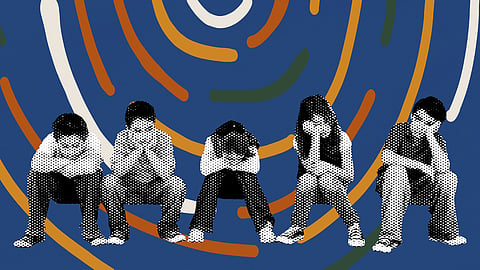

With the entire nation gripped by the pandemic for over a year, families are adjusting to a dramatically different way of life. Children are no longer at school; parents are learning how to homeschool while simultaneously working from home.
For children, a rupture in their daily routine, social isolation from friends and restricted access to being outdoors has led to negative effects of increased agitation, physical deconditioning, increased screen time and even anxiety and stress from pandemic related news.
Concerns associated with home confinement:
With a lack of physical activity and much longer screen times from online education, physical fitness has gone for a toss.
Irregular sleep patterns, less favourable diets result in weight gain and loss of cardiopulmonary endurance.
Children also tend to develop a slouched back and forward head posture and adolescent girls may become more prone to developing postural scoliosis.
Hence, it is imperative that children across all age groups are engaged in some form of physical activity for at least 60 minutes a day.
Tips to combat Physical Inactivity
Younger Children- Incorporate simple and fun games to get a quick dose of gross motor play in their day.
Examples-
● Animal walk races,
● Obstacle courses,
● Wheelbarrow exercise,
● Hopscotch,
● Parent and child yoga and movement dice.
● Engaging the child in online play-based activities with other children to encourage peer interaction
Benefits-
● These strengthen the core, hip, knee and upper back muscles which are important postural stabilizers of the body.
● They also promote balance and agility and are an excellent source of heavy work which helps in regulating the sensory system which is especially helpful in children who are fidgety, wiggly and who have frequent meltdowns.
● It is also a great way to give a brain break in between sessions of online classes.
Older children- It is important that they engage in a structured exercise program involving bodyweight exercise to enhance fitness and endurance. It is important to encourage vertical based function as much as possible in these children to offset the negative effects of prolonged sitting for online classes.
Examples-
● Include bodyweight exercises like jumping jacks, squats, lunges, push-ups and planks
● Surya namaskar
● Use whiteboards, blackboards and standing desks to promote standing every 15 mins an hour.
● Include mindfulness, i.e dedicating complete focus and attention to one task at a time.
Note: It is important that they perform light stretches before and after their workouts. They should also take a stretch break after every 30-40 mins of sitting.
Benefits:
● Surya Namaskar is a quick way to engage the whole body and increase muscle flexibility.
● Functional exercises are a great way to strengthen the muscles and prepare them to support the growing bony skeleton.
● Helps increase the stamina and overall cardiac endurance of the child that is otherwise compromised with inactivity and hours of sitting.
The practice of Mindfulness.
Incorporating mindfulness in your child’s daily routine is an important and healthy practice. Mindfulness means paying full attention to something. It means slowing down to really notice what you're doing.
Benefits:
Children of all ages can benefit from mindfulness and can be a useful tool to decrease anxiety, help with emotional regulation, improve their ability to pay attention and stay calm.
Tips to incorporate mindfulness:
● Breathing exercises form an important part of the practice of mindfulness. For young children, an instruction to simply “pay attention to your breath” can be hard to follow. In that case, you can use a breathing buddy like a stuffed animal and have them place it on their belly. They must focus their attention on the rise and fall of the stuffed animals as they breathe in and out.
● Some other ideas for breathing exercises are blowing cotton balls, blowing at a pinwheel and blowing bubbles.
● Keeping the environment clutter-free especially when the child is engaging in activities like brain games, reading etc.
● Stop and be aware of your surroundings. Being aware of the surrounding, in terms of what we see, feel, hear, smell, the taste is a great way to engage the five senses while being mindful of the environment. p, taste and hear in the present moment.
● Make a mind jar - you can make this by adding clear glue, glitter and some watercolour to a jar of water. It is a bit like a snow globe so you can shake it up and watch the storm, and then ask the child to sit it out and watch the disturbance as it settles down just like our minds do.
There are various online portals that cater to engaging children in physical and brain development activities. We highly recommend exploring such opportunities to help you get started and guide your child through the challenging times of confinement.
There are also various resources available online to help children engage themselves in meaningful physical as well as recreational activities. In the meantime, we at AquaCentric are also providing teleconsultations and sessions conducted by a team of physiotherapists and Occupational therapists that offer tailor-made activities best suited to your child’s needs and interests to help them during this challenging time of confinement.
Dr Devashree Vora is a Pediatric Physiotherapist at AquaCentric Therapy Pvt Ltd.
